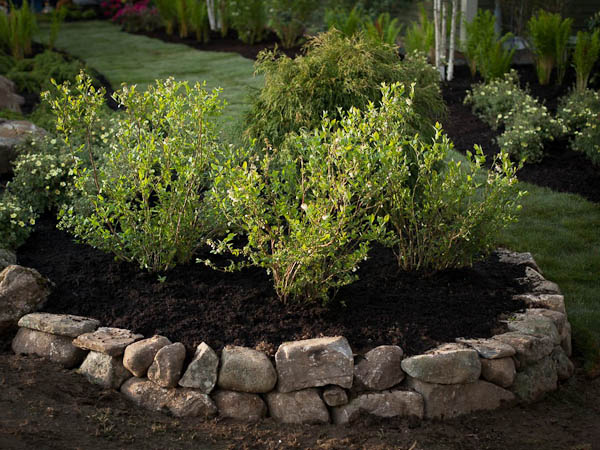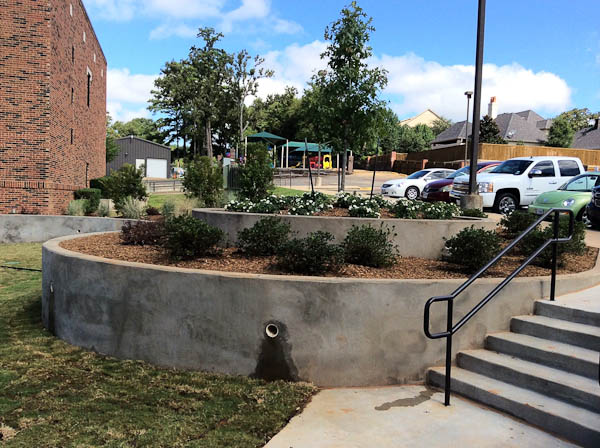Raised beds and drainage systems protect landscapes from excessive rains
While this spring’s substantial rainfall in North Texas has added much-needed water to the area’s reservoirs, it has also created surplus topsoil moisture and saturated the ground. Heavy rains, especially when they last over an extended period of time, place stress on plants in our landscapes.
All plants need water, but there is harm in excessive amounts of rain that fill all the spaces in between the particles of the soil with water and displace the air. Roots of plants need both air and water; when the air spaces in the soil are kept filled with water, the roots are deprived of the oxygen that they need.
If these oversaturated conditions persist, plant roots stop functioning properly and may begin to die. Although soil is filled with water, the roots are unable to absorb it, causing plants to wilt and making them more vulnerable to attack by fungal organisms in the soil that cause root rot. Root rot infections are highly damaging to the roots and are often fatal to the plants.
 Your Landscape with Raised Beds
Your Landscape with Raised Beds
The best way to safeguard your landscape against the damaging effects of excessive rainfall and fungus in the soil that can cause root rot is to ensure adequate drainage. At Simpson Landscape, the primary way we achieve well-drained landscapes is planting in raised beds. Raised beds drain more quickly and dry out faster than ground-level beds.
Whether we are planting shrubs, bedding plants, perennials or ground covers, the beds we prepare for them have added organic matter and are about 6-12” higher than the surrounding soil. Sometimes, raised beds in landscapes have a structure, such as boards or bricks, enclosing the bed.
 Drainage is the Key
Drainage is the Key
At Simpson Landscape, we understand that it’s critical to consider drainage while designing a landscape and to address drainage issues during installation of the beds. There are not many solutions to fix inadequate drainage after the fact, so proper planning by a professional is a prudent preventative measure.
The drainage of a bed is also important to consider when choosing its plants. Lower areas that tend to stay wet are great candidates for raised beds, but alternatively, the area could also be landscaped with specific plants that enjoy wet soils. It is often better to opt for plants that are suited to the drainage in a landscaped area, rather than to try to radically change it.
Sometimes drainage systems may need to be installed. Our licensed landscape architects specialize in drainage work and can help design and install drainage systems on properties where they are needed.
Simpson Landscape will take extra measures to protect your landscapes from the harmful effects of excessive moisture in the soil. Whether through raised beds or professional drainage systems, our experienced landscape architects will create designs for your commercial or residential property that will sustain the rainy season and look great throughout the entire summer.

